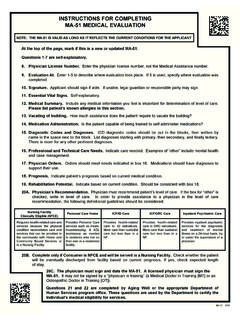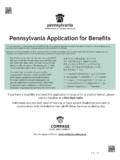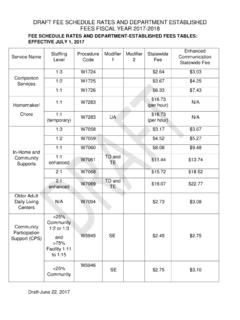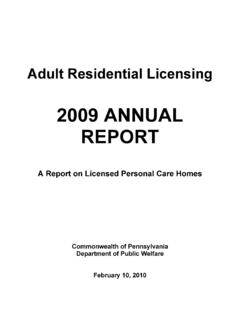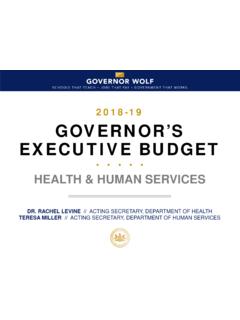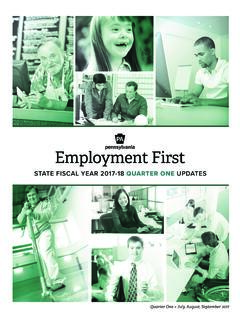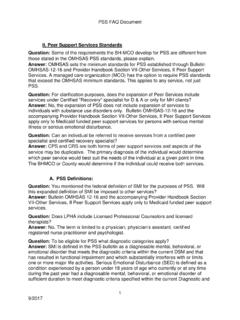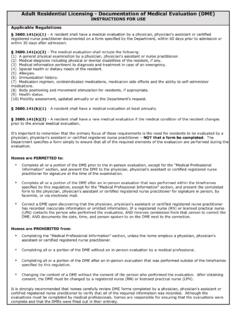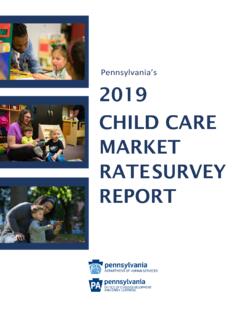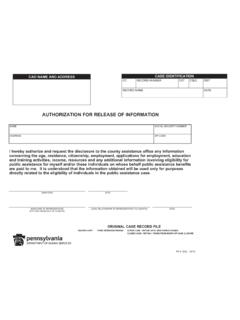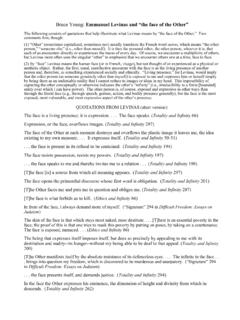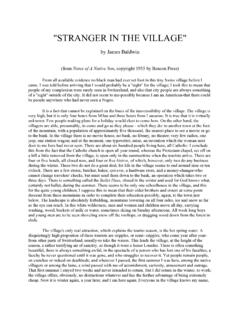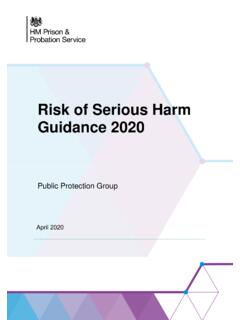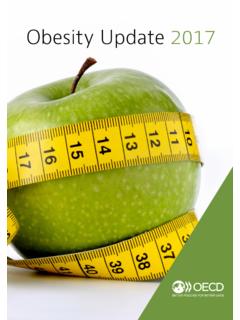Transcription of INDIVIDUAL SUPPORT PLAN: INDIVIDUAL PREFERENCES: LIKE …
1 1 INDIVIDUAL SUPPORT PLANNING Information gathered in this section includes an assessment of health and safety issues, INDIVIDUAL preferences, priorities and needs that promotes a person centered planning process in developing outcomes and positive approaches in supporting the INDIVIDUAL . INDIVIDUAL s Name: Supports Coordinator s Name: Date: Office of Developmental Programs 2 You can use the links below to quickly access an area of the ISP. Your web toolbar will appear which will allow you to use the [Back] and [Forward] buttons. InstructionsBegin PlanIndividual Preferences Like and AdmireKnow and DoDesired ActivitiesImportant to IndividualWhat Makes SenseMedical Medications/SupplementsAllergiesHealth EvaluationsMedical Contacts Medical History Current Health StatusDevelopmental InformationPsychosocial InformationPhysical AssessmentImmunization/BoosterHealth and Safety Focus Area General Health & Safety RisksFire SafetyTrafficCooking/Appliance UseOutdoor AppliancesWater SafetySafety PrecautionsKnowledge of Self- Identifying Information Stranger AwarenessSensory ConcernsMeals/EatingSupervision Care NeedsReasons for Intensive StaffingStaffing Ratio DayStaffing Ratio HomeStaffing RatioBehavioral SUPPORT PlanCrisis SUPPORT PlanHealth CareHealth
2 PromotionFunctional Information Functional Level Physical DevelopmentAdaptive/Self-HelpLearning/Co gnitionCommunicationSocial/Emotional InformationEducational/Vocational InformationEmployment/VolunteerUnderstan ding CommunicationOther Non-Medical EvaluationFinancial Financial InformationFinancial Management IssuesFinancial ResourcesServices and Supports Outcome SummaryOutcome ActionsMonitoring3 Instructions: To navigate the table, use the mouse to click into the blank fields and enter information. The [Tab] button on the keyboard may also be used to tab from field to field in the table. To Enter Information ensure the cursor is in the corresponding cell and begin typing. The cell will expand as the text is entered. To Create Additional Rows for sections such as Important to INDIVIDUAL , Medications, Outcomes etc.
3 The second set of blank rows to be copied from the left hand margin. Note: If the first row is copied and pasted, the hyperlink from page 2 will no longer go to the first entry for that area of the ISP. Instead, the hyperlink will go to the last set of rows pasted into the section. on Edit, Copy. Immediately click on Edit, Paste Rows. rows will appear below the highlighted rows. pasting rows until there are enough rows for the information. *Annual Review Update Date (mm/dd/yyyy) *Annual Review Meeting Date (mm/dd/yyyy) *Category of Plan Changes - The ISP shall be revised if there has been no progress on an outcome, if an outcome is no longer appropriate, or if an outcome needs to be added. If the plan changes are a result of changes in the INDIVIDUAL s circumstances, determine if a revised Prioritization of Urgency for Needs (PUNS) is necessary.
4 (Mark the appropriate box.) Fiscal Year Renewal Used to renew the ISP for the following FY. The ISP will reflect a FY begin date of July 1 and a FY end date of June 30. Critical Revision - Used when INDIVIDUAL supports, services, or funding changes in the existing or future plan. Bi-annual Review - Used for ISP s requiring reviews 2 x a year such as for Pennhurst Class members. Can be used to edit or update an existing plan. This option will not allow the Supports Coordinator role to modify the plan start and end dates. Plan Creation - Used when plan is being created for the first time. Quarterly Review - Used for ISP s that must be reviewed at least every 3 months originating from the date of the Annual Review. General Update Used to update information such as medical information.
5 This should not be used when modifying services and supports. Annual Review Update- Used to update information from the annual review ISP meeting. *The INDIVIDUAL /family requested a limited service and an abbreviated plan: (yes or no) An abbreviated plan can be used for an INDIVIDUAL who is not enrolled in a waiver and receives limited services and supports under $2000. Reason for the abbreviated plan: 4 PLAN: INDIVIDUAL PREFERENCES The INDIVIDUAL Preferences section provides an opportunity for the ISP team to learn and know more about the specific wants, desires, and ways to best SUPPORT the person. It should identify what has been learned about the person s personality, desires, and priorities. The INDIVIDUAL Preferences section is based on Person Centered Planning and is an excellent resource in guiding and supporting the rest of the planning process, including development of outcomes and the identification of meaningful services and supports that are necessary to meet the person s needs.
6 PLAN: INDIVIDUAL PREFERENCES: LIKE AND ADMIRE What do people like and admire about the INDIVIDUAL ? This is a list of attributes that other people like and find admirable about the INDIVIDUAL , such as positive traits, characteristics, ways of interacting, accomplishments, and strengths. This information sets the tone for the plan and should be gathered from multiple viewpoints. It is intended to highlight an INDIVIDUAL s admirable qualities and should only present his or her positive reputation. PLAN: INDIVIDUAL PREFERENCES: KNOW AND DO What does consumer/family think someone needs to know to provide SUPPORT ? Answering What do people need to Know and Do to SUPPORT the person? describes information that people need to know and do in order for the INDIVIDUAL to get what is important to him/her or for him/her to stay safe and healthy.
7 Consider everything that is important to the INDIVIDUAL to determine if there is something that those who SUPPORT the INDIVIDUAL need to know and do. Be sure to ask the INDIVIDUAL and others who know the INDIVIDUAL the best. Discover what traits, habits, coping strategies, preferences for interaction and communication, relationships, types of activities, approaches, or reminders have been helpful to the INDIVIDUAL . Include supports needed for daily living skills and exploration of avenues that are or would be enjoyable to the INDIVIDUAL such as employment opportunities, establishing community connections, full participation in community life, voting, learning new skills or hobbies, connecting with other people, helping others (such as community volunteers), relationships, dating, etc.
8 If more detailed information is elsewhere in the plan such as in Health Promotion or Communication, include a statement that refers to that area of the plan. PLAN: INDIVIDUAL PREFERENCES: DESIRED ACTIVITIES 5 What are the activities that the INDIVIDUAL would like to participate in or explore? Activities that the INDIVIDUAL would like to continue, to begin, or to explore further should be documented in Desired Activities. This information can help the SUPPORT Team (Circle) create outcomes with the INDIVIDUAL that can assist the INDIVIDUAL in exploring activities that are important to him or her, such as employment opportunities, establishing community connections, full participation in community life, voting, learning new skills or hobbies, things that are or would be enjoyable to the INDIVIDUAL , connecting with other people, helping others (such as community volunteers), relationships, dating, etc.
9 PLAN: INDIVIDUAL PREFERENCES: IMPORTANT TO The Important To section lists and prioritizes things that are important to the INDIVIDUAL . It describes things that need to stay the same in the INDIVIDUAL s life, and/or changes that would be important for the team to address. Only things that are important TO the INDIVIDUAL should be included here. What is important FOR the INDIVIDUAL can be captured in other areas of the plan such as in Health and Safety. This information should reflect who and what is important to the INDIVIDUAL in relationship with others and their interactions, in things to do or have, in rhythm or pace of life, or in positive rituals or routines. In addition, consideration should be given to: caring relationships, current job situations, employment opportunities, living arrangements, recreational community connections, spiritual needs and faith preferences.
10 These could include volunteering in the community and getting to know neighbors, etc. Things that are important to an INDIVIDUAL should be linked to outcomes. Two levels of priority are tracked: Essential: Those things listed which must/must not be present in the INDIVIDUAL s life in order for a good day to occur. Strongly desired: Those things listed which would strongly contribute to the INDIVIDUAL s happiness, but, would not be detrimental to their well being if not present. *Priority (Strongly Desired or Essential) *Important to INDIVIDUAL 6 PLAN: INDIVIDUAL PREFERENCE: WHAT MAKES SENSE The What Makes Sense section of the plan is used to capture information about what experiences do and do not make sense in the life of the INDIVIDUAL RIGHT NOW.
